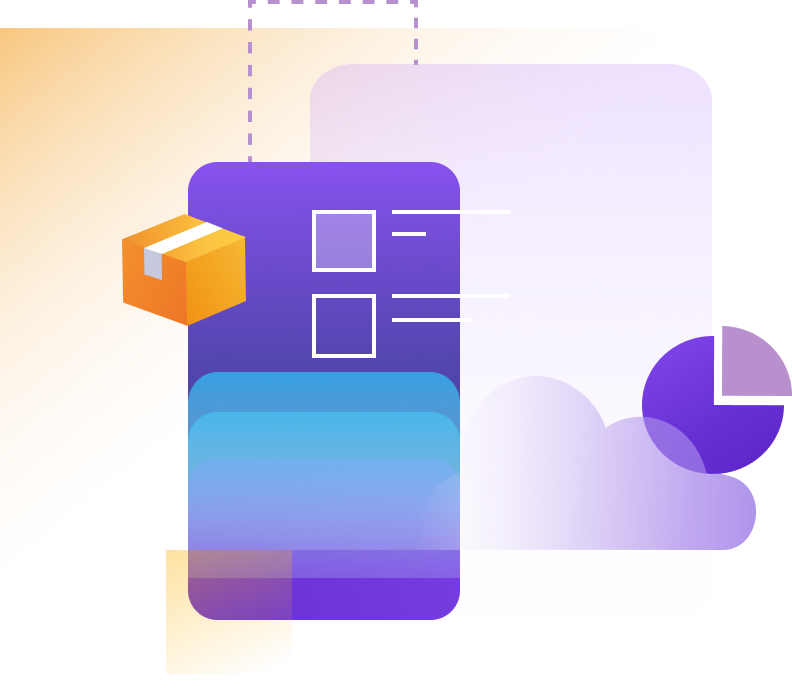
Top 5 Software Development Trends in Retail

The retail sector has been beset with challenges over the last few years — from Covid-19 to supply chain issues and rising inflation. Brick-and-mortar stores as well as online e-tailers have had to rethink strategies to maintain profitability and find new ways to meet evolving customer demands. Although there is no assurance that such disruption will come to an end in the immediate future, your business can innovate and gain a competitive advantage by adopting technology solutions that help overcome sector-wide obstacles.
Below are the top five retail software development trends that will help your CPG or retail enterprise thrive, even in uncertain times.
1. Hyper-personalization

Modernizing retail is more than simply making items available online and across devices; it’s also understanding and adapting to customer expectations. Personalization is key, with 74% of customers feeling dissatisfied when online shopping is not tailored to their unique needs. Meeting such demand at scale is possible through leveraging data with advanced technology applications.
Hyper-personalization is made possible by:
- Using AI and ML to analyze customer data from every touchpoint
- Developing a 360-degree view of the customer
- Implementing natural language processing (NLP) to interact with customers
- Combining data sets to anticipate buying trends and customer behavior
2. Cloud management and data enhancement

You collect data at every step along the customer journey. However, turning enormous amounts of data into actionable insights isn’t possible without powerful applications that are too large to host on a traditional mainframe. Additionally, using retail data comes with challenges, such as:
- Securing data
- Removing data silos
- Formatting data to make it usable
A mainframe connector allows you to migrate to the cloud smoothly and securely by transcoding data into Optimized Row Columnar (ORC) files. Doing so optimizes data processing and brings the power of cloud services to the mainframe by easily moving data between the mainframe, the cloud, and serverless data warehouses.
Once such a solution is in place, it becomes easier to use data for demand forecasting, gaining insight into workflows, and running performance checks of demand centers.
3. Order automation

Fulfilling orders accurately and quickly is essential to your business. Unfortunately, the process is hampered by challenges including labor shortages and human error. Harnessing the power of retail data and combining it with AI and ML technologies provides a scalable solution for automating order fulfillment.
An order management system (OMS) that can integrate with the systems of logistics companies and suppliers:
- Reduces labor costs
- Brings transparency to the fulfillment process
- Streamlines processes by eliminating manual tasks
- Mitigates supply chain challenges
- Improves risk management by limiting the opportunity for human error
- Enables omnichannel shopping experiences
4. Omnichannel commerce transformation

Sales are made in a variety of locations and on different platforms. During their journey, your customers want to seamlessly transition between mobile devices, desktops, and in-store transactions. Expectations have evolved to the point where consumers expect both the convenience of online shopping and the experience of being inside a brick-and-mortar location. Additionally, customers want to be able to order goods online and have the option of picking them up at a store or having them delivered. Such in-store and digital options should also be made available for returns.
A successful omnichannel transformation includes:
- Synchronizing orders across platforms with API-based integrations
- Tracking inventory data across all channels
- Eliminating channel silos for easy order tracking
- AR/VR integration to provide immersive digital experiences when shopping
5. Demand forecasting

Troubles with the supply chain and the rise of omnichannel shopping have made inventory management more important than ever. Combining the abundance of customer data your retail company accumulates each day with data points such as store location, time of year, promotions, and customer segments results in actionable forecasts that optimize supply.
Demand forecasting is vital to:
- Maximizing profit margins
- Optimizing warehouse operations
- Driving production planning
- Allocating resources
- Meeting customer demand
Adopting and implementing the latest technologies that are transforming the sector is key to meeting customer expectations and staying competitive in an evolving market. SoftServe’s retail experts leverage their experience in implementing end-to-end retail and CPG solutions to gain actionable insights from your data, accelerate your time to market, and increase profitability.
Let’s talk about how SoftServe works as your partner for every step of your digital journey, from cloud migration to omnichannel transformation.

